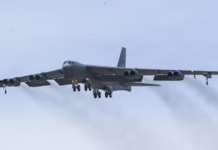Seven years behind schedule and facing intensified FAA scrutiny, Boeing’s troubled widebody program continues hemorrhaging cash as certification drags toward 2027.
Boeing has taken a $5 billion charge related to continued delays in its 777X widebody jet program, pushing total losses on the troubled aircraft to $15 billion as the delivery timeline slips to 2027.
The latest financial blow compounds mounting setbacks for the aircraft originally scheduled to enter service in 2020. The plane is now seven years behind schedule as it works through increasingly demanding Federal Aviation Administration certification requirements, according to Boeing’s third-quarter 2025 earnings report.
Boeing calculated the latest delay to 2027 as a non-cash accounting charge of between $2.5 billion and $4.9 billion, according to Bloomberg. The accumulated $15 billion in charges represents a significant drain on the manufacturer’s bottom line as it struggles to recover from years of quality and safety crises.
CEO Kelly Ortberg acknowledged in September that Boeing faces a “mountain of work” on the 777X program, adding that “we still have a significant portion of the flight test certification program to go.”
Heightened Regulatory Scrutiny
The FAA has intensified its oversight of Boeing’s certification processes following the fatal crashes of two 737 MAX 8 aircraft in 2019 that killed 346 passengers and crew. Those incidents triggered the longest grounding of a commercial aircraft type in history, lasting 20 months.
Safety concerns resurfaced in 2024 when an Alaska Airlines 737 MAX lost a door plug in midair, further damaging confidence in Boeing’s quality assurance systems. The heightened regulatory environment has extended timelines across multiple aircraft programs, including the 737 MAX 7 and MAX 10, which remain uncertified.
Technical Complexity
The 777X will become the largest twinjet in commercial aviation history, featuring GE9X engines—the most powerful turbofans ever fitted to a passenger aircraft. The design includes industry-first folding wingtips intended to improve fuel efficiency while allowing the aircraft to use existing airport infrastructure designed for earlier 777 models.
These technical innovations have added complexity to an already challenging certification process. The folding wingtip technology has never been implemented on a commercial airliner, requiring extensive testing and validation.
Broader Boeing Challenges
Boeing’s difficulties extend beyond the 777X program. The company faces labor disputes at key defense facilities in the St. Louis area, affecting production of military aircraft. The defense division also continues work on troubled next-generation Air Force One jets that have generated significant losses.
Despite these challenges, Boeing recently secured a contract from President Donald Trump for sixth-generation fighter aircraft for the U.S. Air Force.
Market Position
Once certified, the 777X will compete for the high-capacity segment of the widebody market previously dominated by the Boeing 747 and Airbus A380. Boeing projects the aircraft will offer 10-15% lower operating costs compared to competing Airbus designs, though customer patience is wearing thin after years of delays.
The program’s extended development timeline and mounting costs underscore the financial risks facing aircraft manufacturers as regulatory standards tighten and technical requirements grow more complex.

Key Takeaways
- Boeing recorded a $5 billion charge on the 777X program in third-quarter 2025, bringing total accumulated losses to $15 billion as delivery slips to 2027—seven years behind the original 2020 schedule.
- Intensified FAA oversight following fatal 737 MAX crashes and subsequent safety incidents has extended certification timelines across multiple Boeing aircraft programs.
- The 777X features unprecedented technology including GE9X engines and industry-first folding wingtips, adding complexity to certification testing and validation processes.
- Boeing faces concurrent challenges across commercial and defense divisions, including labor disputes and losses on Air Force One development contracts.








